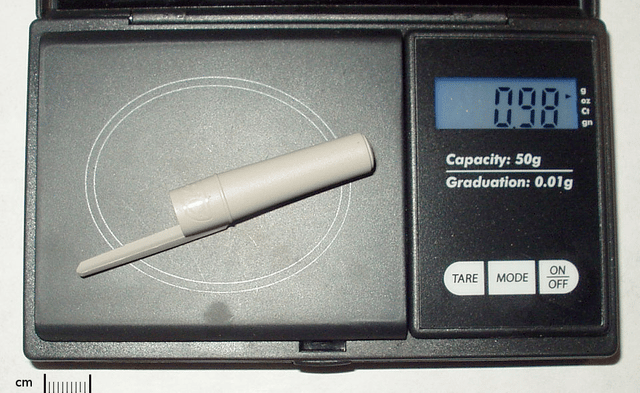Gram

Gram

| Gram | |
|---|---|
| General information | |
| Unit system | UCUM base unitandCGSunit |
| Unit of | Mass |
| Symbol | g |
| Conversions | |
| 1 g in... | ... is equal to... |
| SI base units | 10kilograms |
| CGS units | 1 gram |
| Imperial unitsU.S. customary | 0.0353ounces |
Originally defined as "the absolute weight of a volume of pure water equal to the cube of the hundredth part of a metre [1 cm3], and at the temperature of melting ice"[4] (later at 4 °C, the temperature of maximum density of water). However, in a reversal of reference and defined units, a gram is now defined as one thousandth of the SI base unit, the kilogram, or 1×10−3 kg, which itself is now defined by the International Bureau of Weights and Measures, not in terms of grams, but by "the amount of electricity needed to counteract its force"[5]
| Gram | |
|---|---|
| General information | |
| Unit system | UCUM base unitandCGSunit |
| Unit of | Mass |
| Symbol | g |
| Conversions | |
| 1 g in... | ... is equal to... |
| SI base units | 10kilograms |
| CGS units | 1 gram |
| Imperial unitsU.S. customary | 0.0353ounces |
Official SI symbol
The only unit symbol for gram that is recognised by the International System of Units (SI) is "g" following the numeric value with a space, as in "640 g" to stand for "640 grams" in the English language. The SI does not support the use of abbreviations such as "gr" (which is the symbol for grains),[6] "gm" ("g⋅m" is the SI symbol for gram-metre) or "Gm" (the SI symbol for gigametre).
History
The word gramme was adopted by the French National Convention in its 1795 decree revising the metric system as replacing the gravet introduced in 1793. Its definition remained that of the weight (poids) of a cubic centimetre of water.[7][8] French gramme was taken from the Late Latin term gramma. This word—ultimately from Greek γράμμα (grámma), "letter"—had adopted a specialised meaning in Late Antiquity of "one twenty-fourth part of an ounce" (two oboli),[9] corresponding to about 1.14 modern grams. This use of the term is found in the carmen de ponderibus et mensuris ("poem about weights and measures") composed around 400 AD.[1] There is also evidence that the Greek γράμμα was used in the same sense at around the same time, in the 4th century, and survived in this sense into Medieval Greek,[11] while the Latin term did not remain current in Medieval Latin and was recovered in Renaissance scholarship.[2]
The gram was the fundamental unit of mass in the 19th-century centimetre–gram–second system of units (CGS). The CGS system co-existed with the MKS system of units, first proposed in 1901, during much of the 20th century, but the gram has been displaced by the kilogram as the fundamental unit for mass when the MKS system was chosen for the SI base units in 1960.
Uses
The gram is today the most widely used unit of measurement for non-liquid ingredients in cooking and grocery shopping worldwide.
Most standards and legal requirements for nutrition labels on food products require relative contents to be stated per 100 g of the product, such that the resulting figure can also be read as a percentage by weight.
Conversion factors
1 gram (g) = 15.4323583529 grains (gr)
1 grain (gr) = 0.06479891 grams (g)
1 avoirdupois ounce (oz) = 28.349523125 grams (g)
1 troy ounce (ozt) = 31.1034768 grams (g)
100 grams (g) = 3.527396195 ounces
1 gram (g) = 5 carats (ct)
1 gram (g) = 8.98755179×1013 joules (J) (by mass–energy equivalence)
1 undecimogramme = 1 "eleventh-gram" = 10−11 grams in the historic quadrant–eleventh-gram–second system (QES system) a.k.a. hebdometre–undecimogramme–second system (HUS system) (HUS system) [12]
500 grams (g) = 1 Jin in the Chinese units of measurement.
Comparisons
1 gram is roughly equal to 1 small paper clip or pen cap.
The Japanese 1 yen coin has a mass of one gram,[13] lighter than the British penny (3.56 g), the United States cent (2.5 g), the Euro cent (2.30 g), and the 5 cent Australian coins(2.80 g).
See also
Conversion of units
Duella
Gold gram
Orders of magnitude (mass)
Gram (Mythology)